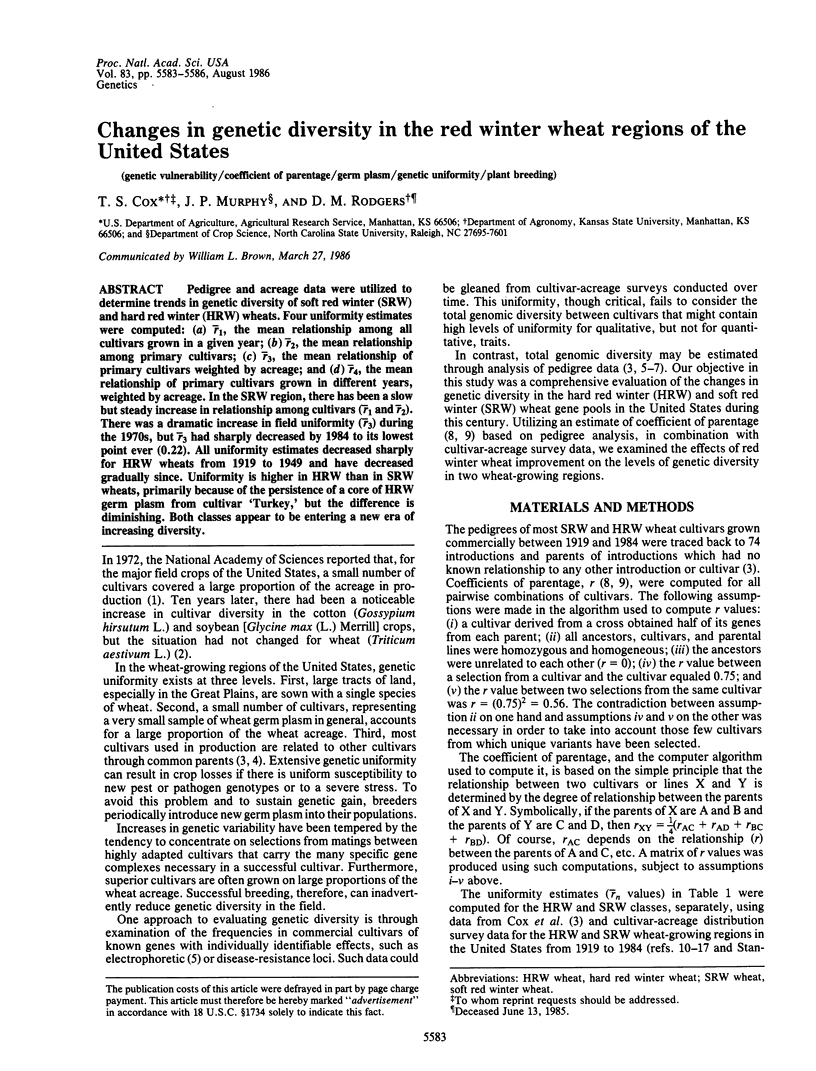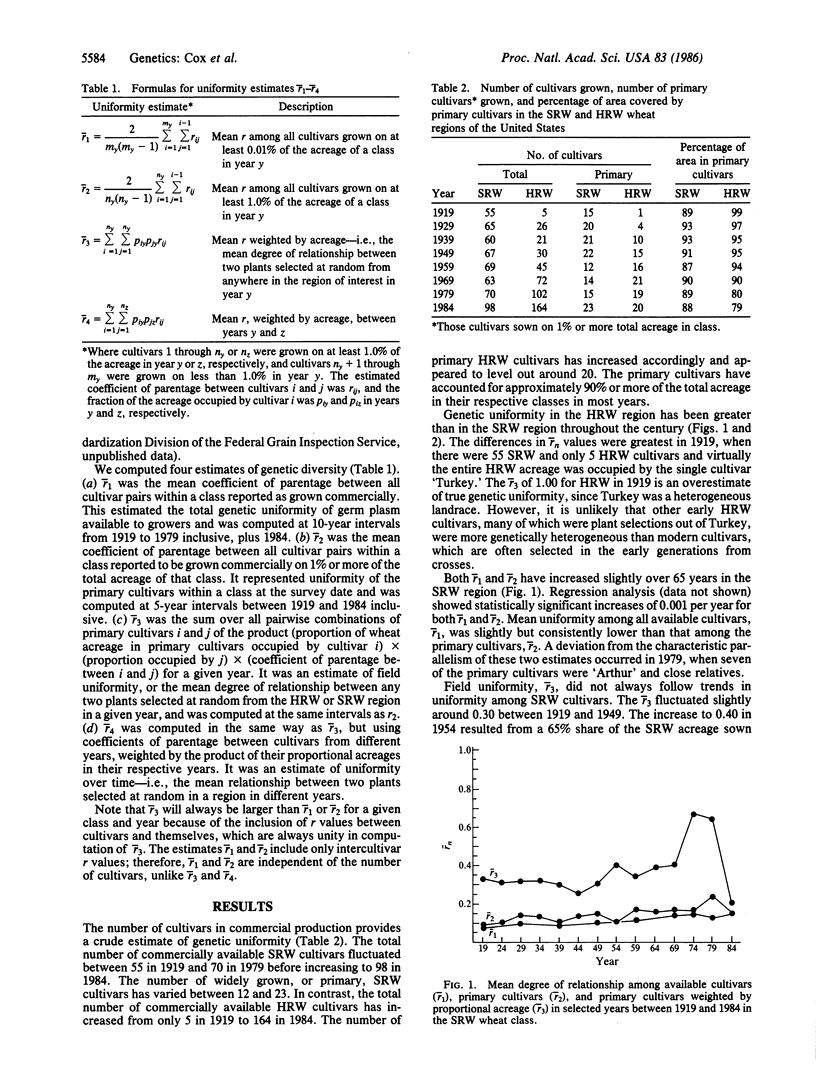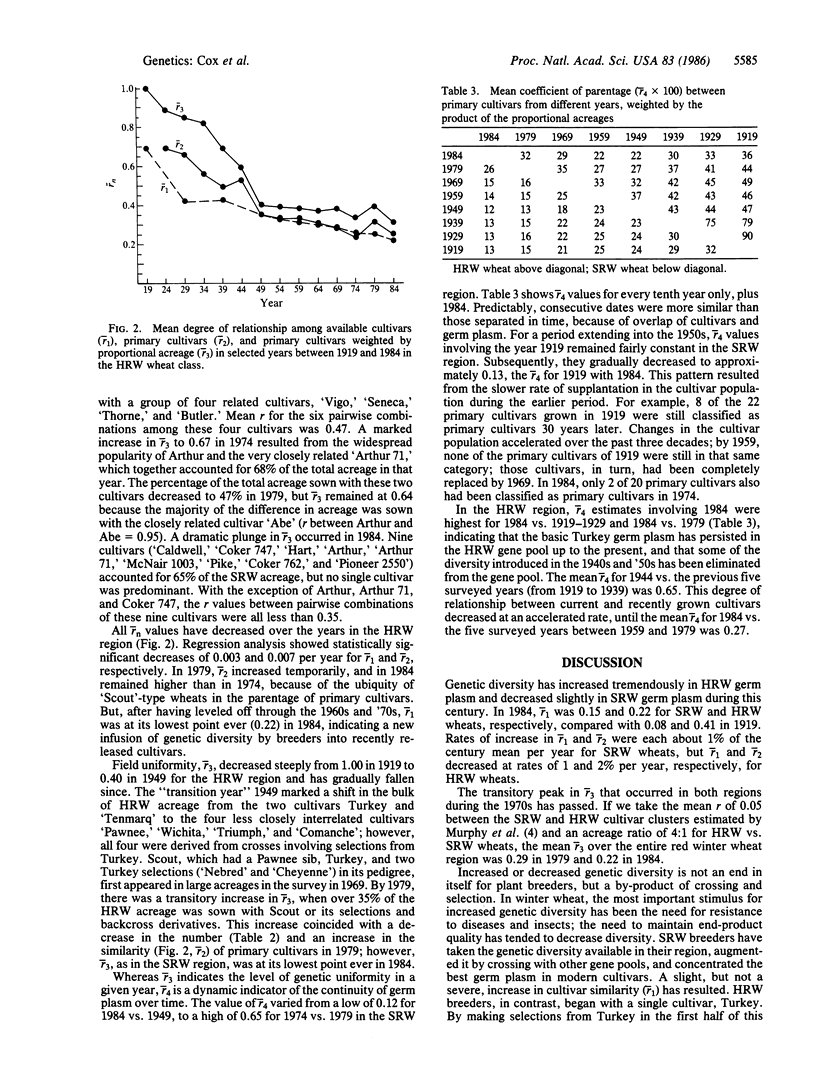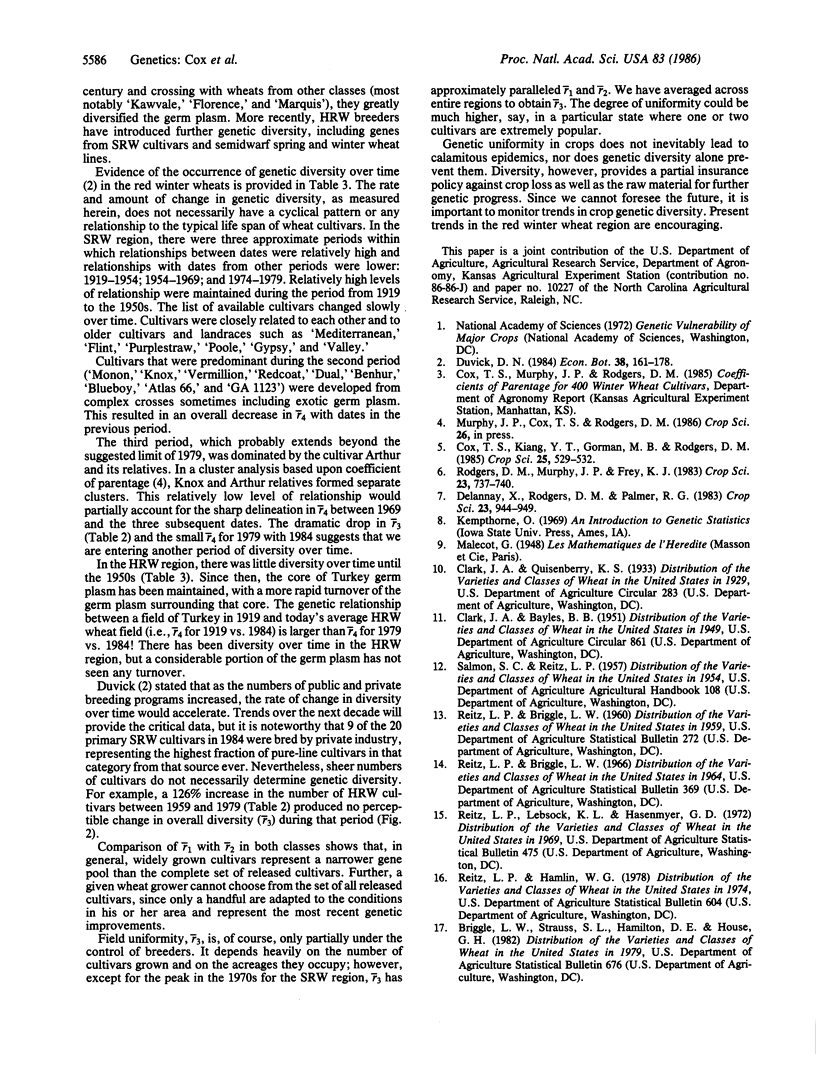Abstract
Pedigree and acreage data were utilized to determine trends in genetic diversity of soft red winter (SRW) and hard red winter (HRW) wheats. Four uniformity estimates were computed: (a) r̄1, the mean relationship among all cultivars grown in a given year; (b) r̄2, the mean relationship among primary cultivars; (c) r̄3, the mean relationship of primary cultivars weighted by acreage; and (d) r̄4, the mean relationship of primary cultivars grown in different years, weighted by acreage. In the SRW region, there has been a slow but steady increase in relationship among cultivars (r̄1 and r̄2). There was a dramatic increase in field uniformity (r̄3) during the 1970s, but r̄3 had sharply decreased by 1984 to its lowest point ever (0.22). All uniformity estimates decreased sharply for HRW wheats from 1919 to 1949 and have decreased gradually since. Uniformity is higher in HRW than in SRW wheats, primarily because of the persistence of a core of HRW germ plasm from cultivar `Turkey,' but the difference is diminishing. Both classes appear to be entering a new era of increasing diversity.
Keywords: genetic vulnerability, coefficient of parentage, germ plasm, genetic uniformity, plant breeding
Full text
PDF





